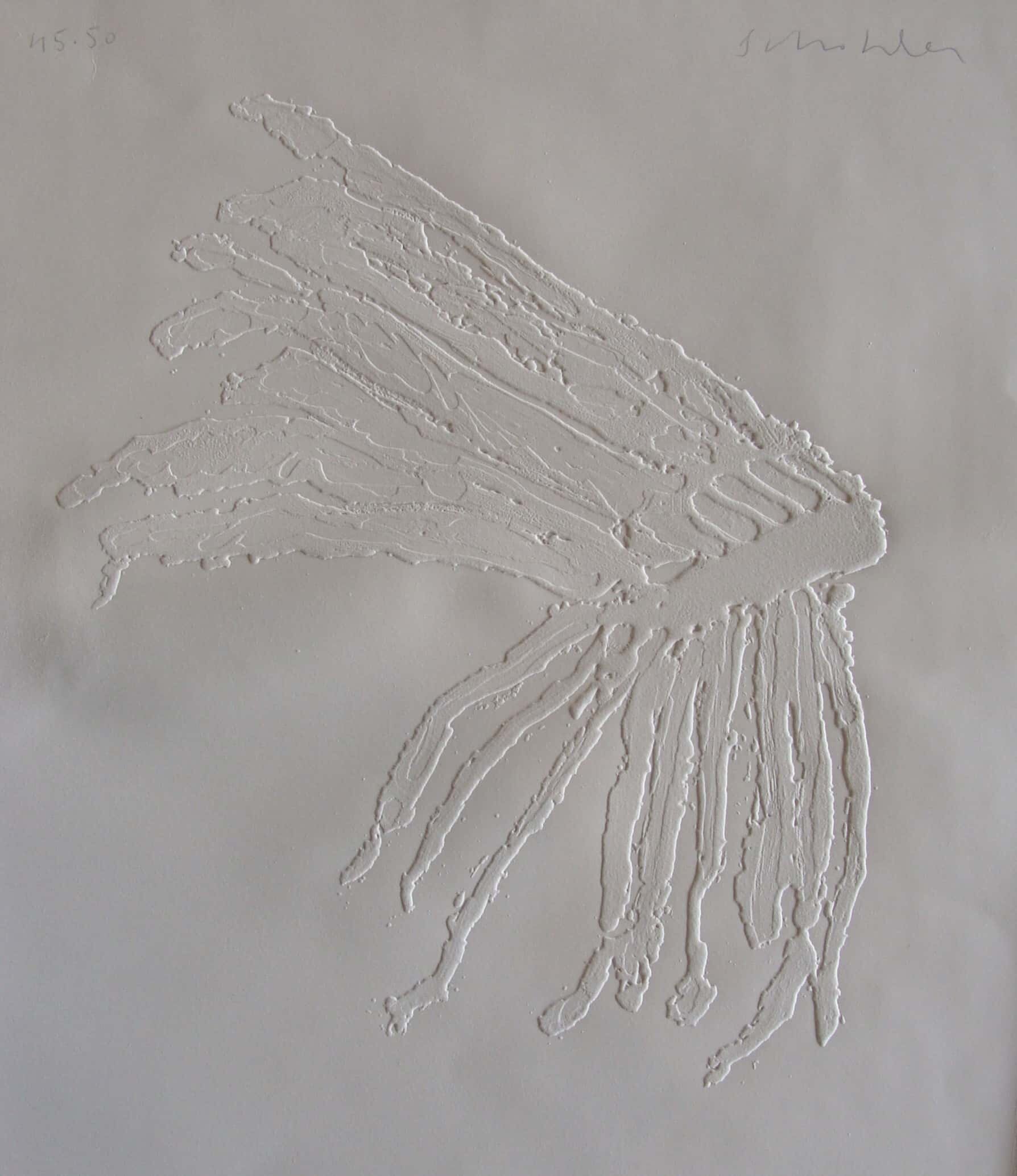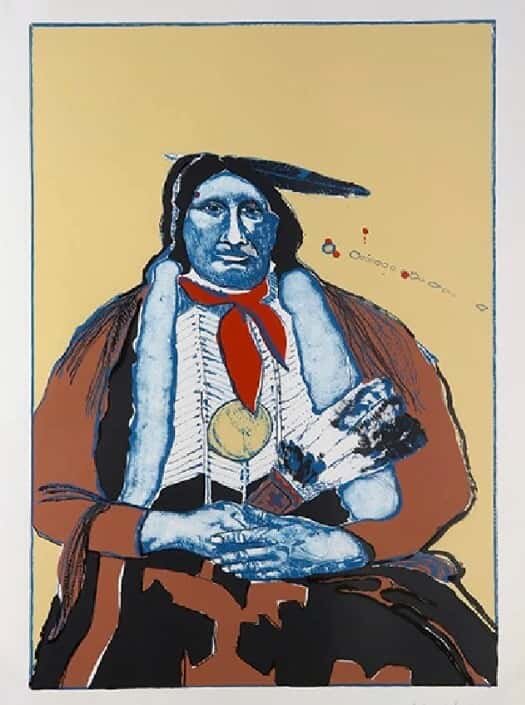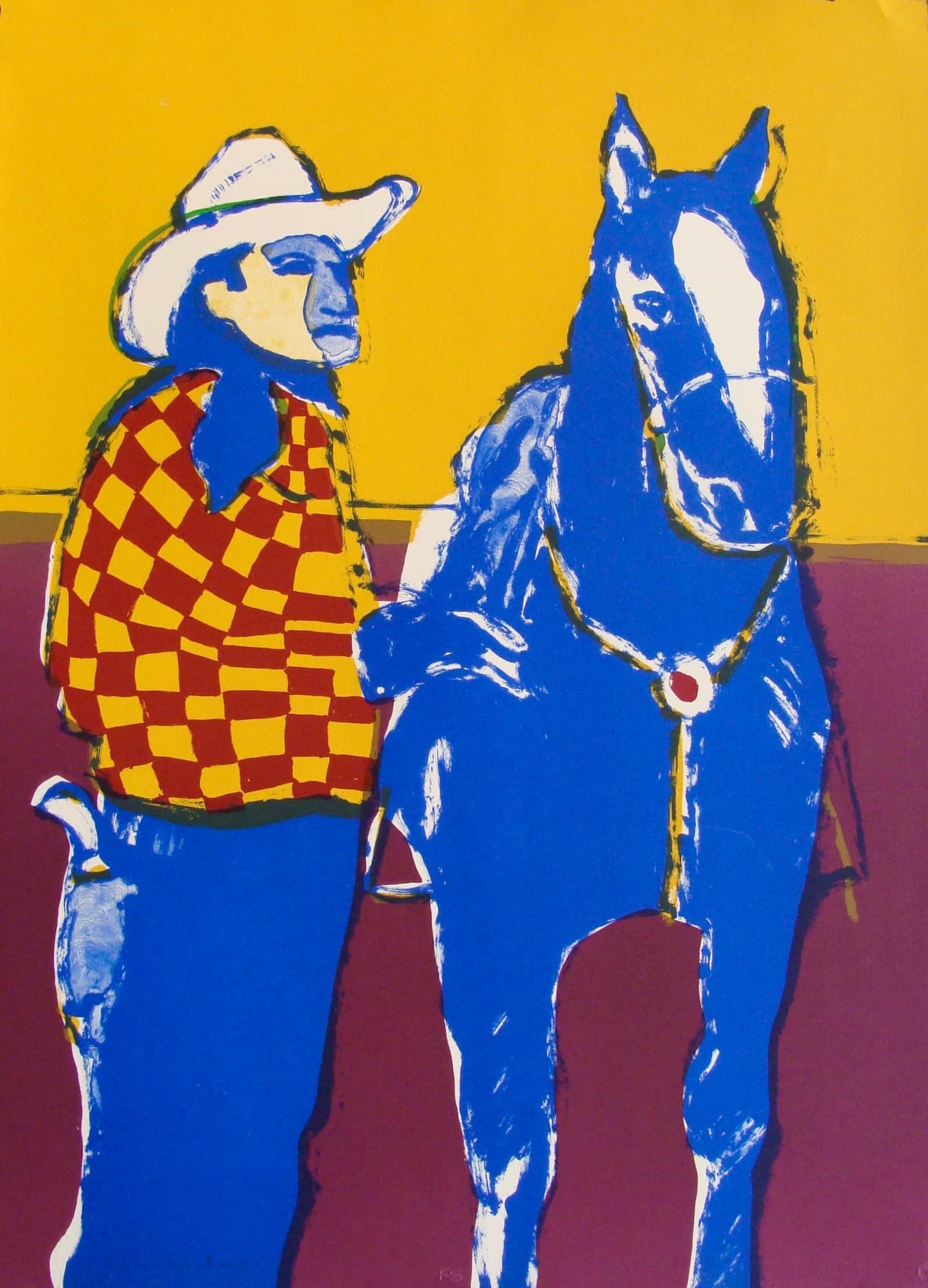Fritz Scholder (1937-2005)
"White Feather Headdress"
embossed etching, edition of 50
20" x 17"
"Indian Landscape" (First state)
lithograph, edition of 50
28" x 20"
"Indian Landscape" (Third state)
lithograph, edition of 53
28" x 20"
"Indian Encampment" (First state)
lithograph, edition of 50
22" x 26"
"Liberty Unfinished" ©1986
bronze, edition of 26
16" x 5" x 4" (SOLD)
"Another Dream Horse" ©1986
bronze, edition of 16
19" x 23" x 7" (SOLD)
"Red Indian"
acrylic on canvas
80
x 68" (SOLD)
"Bird Indian"
lithograph, edition of 100
22" x 30" (SOLD)
"Indian at the Circus"
lithograph, edition of 75
30" x 22" (SOLD)
"Cowboy Indian (Second state)"
lithograph, edition of 20
24" x 17" (SOLD)
"Indian in Paris"
lithograph, edition of 100
30" x 22" (SOLD)
"American Indian #4"
lithograph, edition of 100
30" x 22" (SOLD)
"Indian with Feather Fan" (First state)
lithograph, edition of 150
30" x 22" (SOLD)
"Matinee Cowboy"
lithograph, edition of 150
30" x 22" (SOLD)
"Portrait of a Massacred Indian"
lithograph, edition of 100
40" x 30" (SOLD)
About the Artist
"I'm interested in someone reacting to the work. And I don't much care if they react negatively or positively, as long as they react. I felt it to be a compliment when I was told that I had destroyed the traditional style of Indian art." — Fritz Scholder
Although Scholder did not consider himself an Indian, he was regarded as a leader of the New American Indian Art Movement. From 1964 to 1969 he taught painting and art history at the Institute of American Indian Arts in Santa Fe. From the beginning, he struggled to represent the landscape and people of the Southwest without indulging in the romantic clichés of genre art on the Native themes. In time he created an extraordinary fusion of abstract expressionism, surrealism and Pop art to express his unique vision of the Southwestern scene and the Native experience.
In his work, he frequently showed the harsh, realistic side of Indians' lives and deaths, including the effects of alcohol, but some of his depictions are humorous such as Indians on horseback carrying umbrellas. His brushwork is generally swift, and the tone often somber and surreal. A major influence on his work was the contemporary British artist, Francis Bacon, from whom Scholder adapted ironic distortions into his canvases.
















